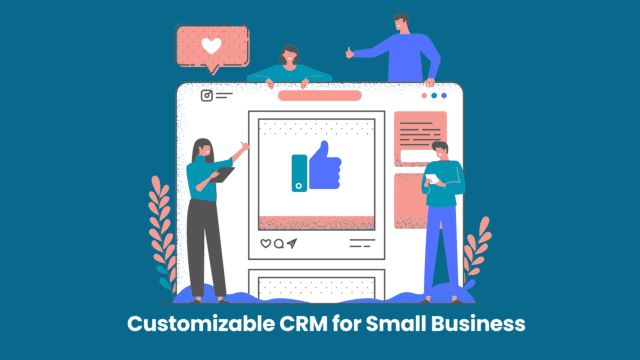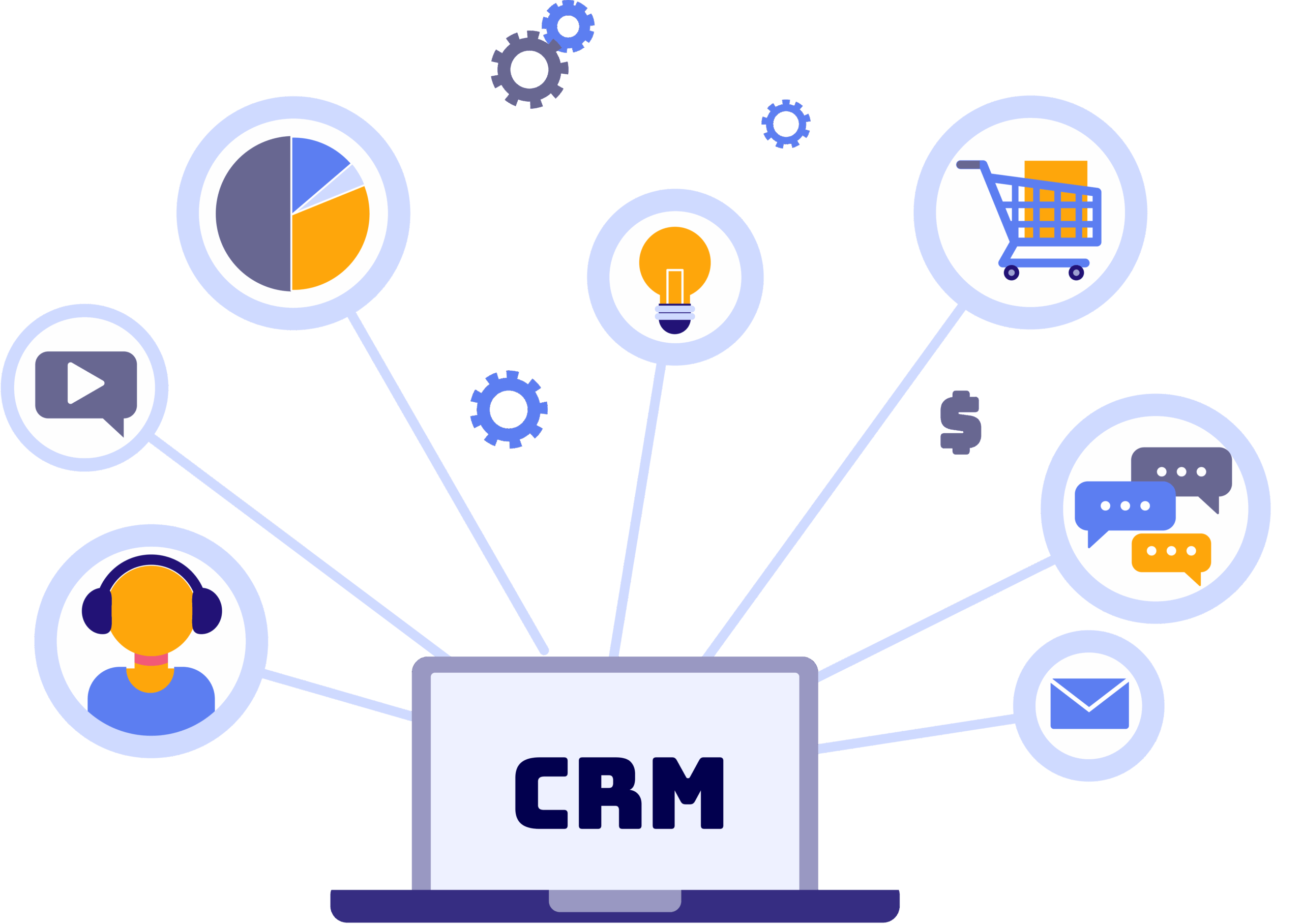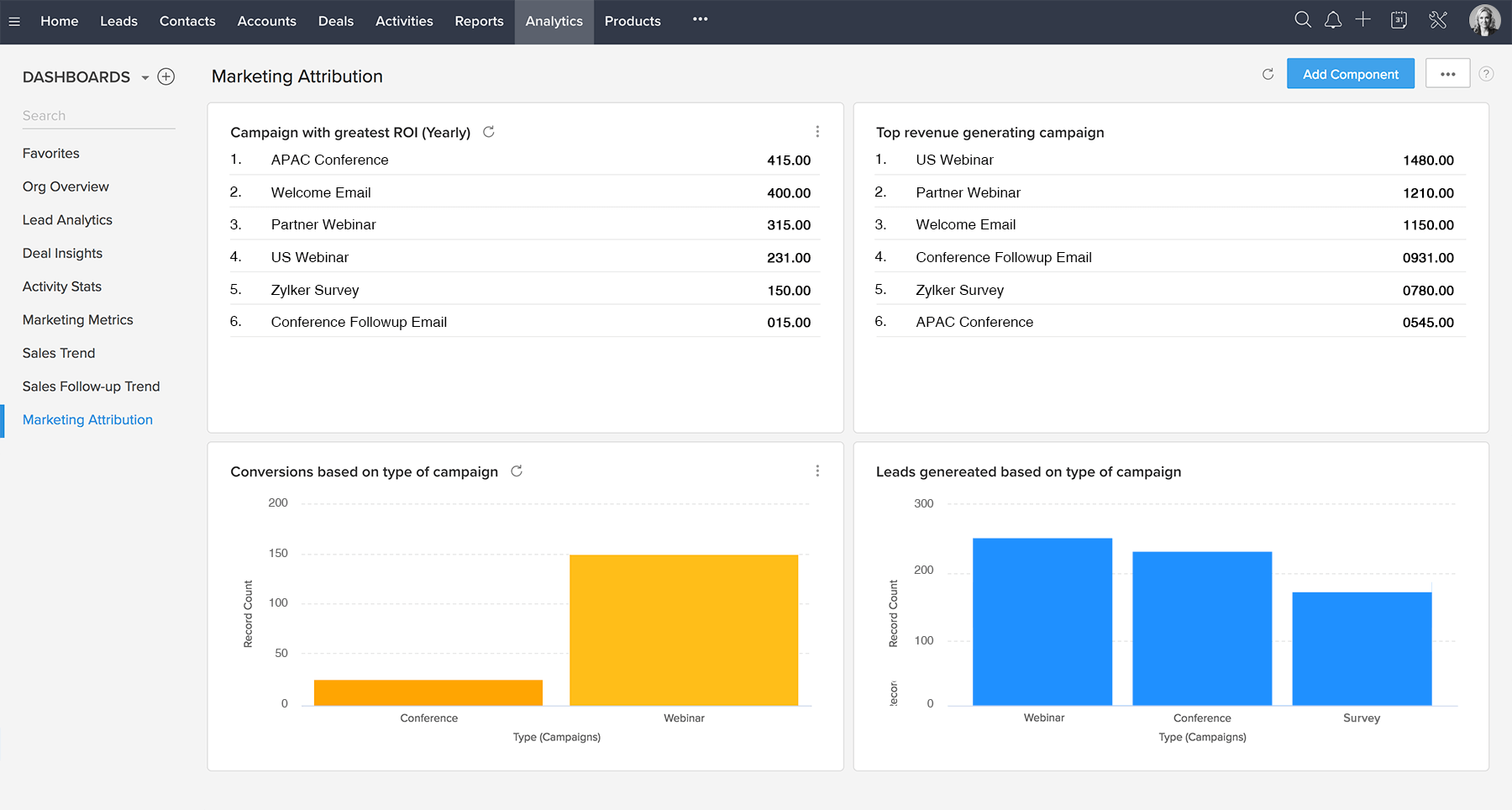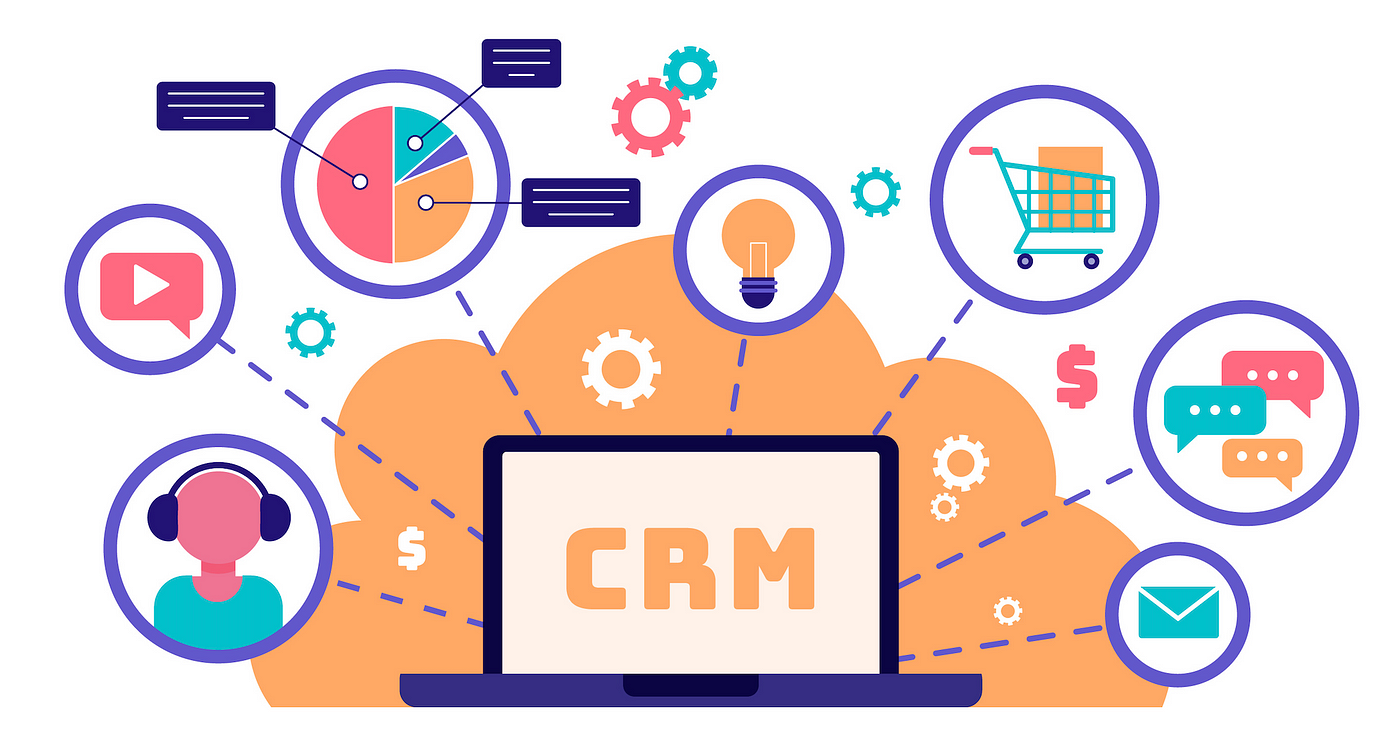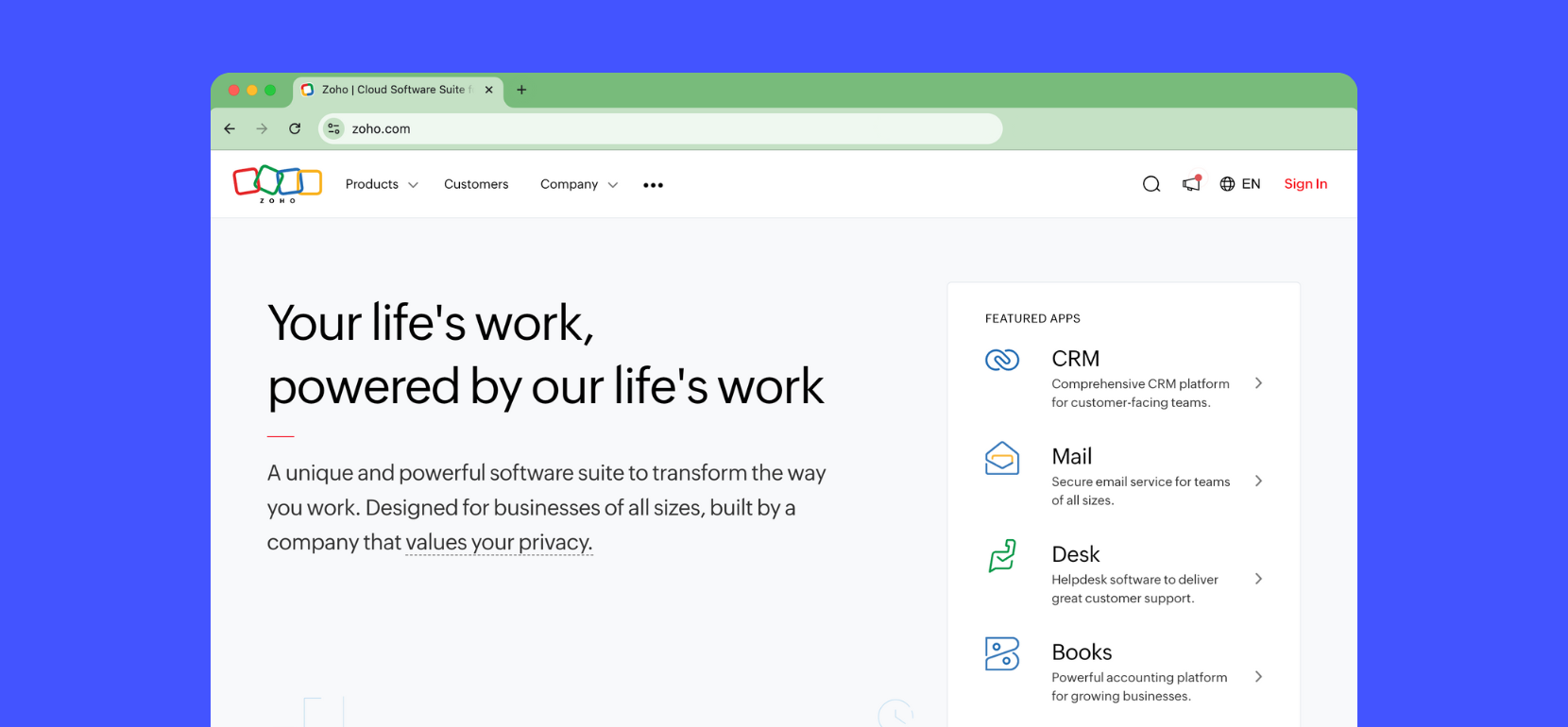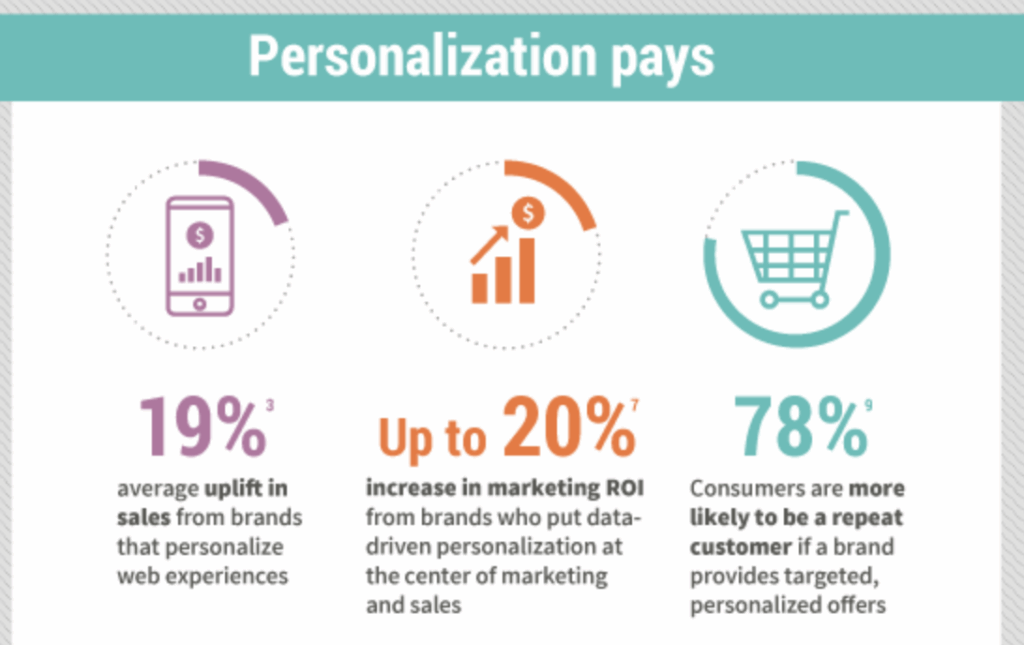
In the ever-evolving landscape of digital marketing, one thing remains constant: the customer. Building and nurturing relationships with your audience is paramount to long-term success. This is where the power of Customer Relationship Management (CRM) combined with marketing personalization comes into play. It’s not just about selling; it’s about understanding, connecting, and providing value at every touchpoint. This comprehensive guide will delve into the intricacies of CRM marketing personalization, exploring its benefits, strategies, and practical implementation.
What is CRM Marketing Personalization?
At its core, CRM marketing personalization is the art of tailoring your marketing efforts to resonate with individual customers based on their behaviors, preferences, and interactions. It leverages the data stored within your CRM system to create highly relevant and personalized experiences. Think of it as moving away from the one-size-fits-all approach and embracing a customized approach that recognizes each customer’s unique needs and desires.
This involves utilizing customer data to segment your audience, create targeted messaging, and deliver relevant content across various channels. It goes beyond simply using a customer’s name in an email. It encompasses understanding their past purchases, website browsing history, demographics, and even their stated preferences to craft truly personalized experiences.
Key Components of CRM Marketing Personalization:
- Data Collection and Management: Gathering and organizing customer data from various sources, including website interactions, purchase history, social media activity, and customer service interactions. This forms the foundation of any successful personalization strategy.
- Segmentation: Grouping customers into distinct segments based on shared characteristics, behaviors, or needs. This allows for more targeted and relevant marketing campaigns.
- Personalized Content Creation: Crafting content, such as emails, website copy, and product recommendations, that is tailored to the specific interests and needs of each customer segment.
- Channel Optimization: Delivering personalized content through the most effective channels for each customer, whether it’s email, SMS, social media, or your website.
- Automation: Utilizing marketing automation tools to streamline the personalization process, such as sending triggered emails based on customer behavior or personalizing website content in real-time.
Why is CRM Marketing Personalization Important?
In today’s competitive market, customers are bombarded with marketing messages. They’re more discerning than ever and expect a personalized experience. Generic, irrelevant marketing campaigns are often ignored, leading to wasted resources and missed opportunities. CRM marketing personalization offers a powerful solution to this challenge.
Benefits of CRM Marketing Personalization:
- Increased Customer Engagement: Personalized content and experiences are more likely to capture a customer’s attention and encourage interaction.
- Improved Conversion Rates: Targeted messaging and relevant offers can significantly boost conversion rates, leading to more sales and revenue.
- Enhanced Customer Loyalty: When customers feel understood and valued, they are more likely to remain loyal to your brand.
- Higher Customer Lifetime Value: By building stronger relationships and providing ongoing value, personalization can increase the lifetime value of each customer.
- Reduced Marketing Costs: By focusing your efforts on the most relevant audience segments, you can reduce wasted ad spend and improve your return on investment (ROI).
- Better Customer Satisfaction: Personalized experiences create a more positive and satisfying customer journey.
In essence, CRM marketing personalization is a win-win. It benefits both the business and the customer. Businesses see higher engagement, conversions, and loyalty, while customers receive more relevant and valuable experiences.
Strategies for Effective CRM Marketing Personalization
Implementing a successful CRM marketing personalization strategy requires a well-defined plan and a commitment to understanding your customers. Here are some key strategies to consider:
1. Data Collection and Analysis
The foundation of any personalization strategy is data. You need to collect and analyze data from various sources to understand your customers. This includes:
- Website Analytics: Track website traffic, page views, time on site, and other metrics to understand how customers interact with your website.
- CRM Data: Leverage the data stored in your CRM system, including customer demographics, purchase history, and past interactions.
- Social Media Data: Monitor social media activity to understand customer preferences, interests, and brand sentiment.
- Customer Surveys and Feedback: Collect direct feedback from customers through surveys, reviews, and other channels.
- Third-Party Data: Consider using third-party data providers to supplement your existing data with additional insights.
Once you have collected data, you need to analyze it to identify patterns, trends, and insights. This analysis will inform your segmentation and content creation efforts.
2. Customer Segmentation
Segmentation is the process of dividing your customer base into distinct groups based on shared characteristics. This allows you to create more targeted and relevant marketing campaigns. Consider segmenting your customers based on:
- Demographics: Age, gender, location, income, education, etc.
- Purchase History: Products purchased, purchase frequency, average order value, etc.
- Website Behavior: Pages visited, content downloaded, time spent on site, etc.
- Engagement Level: Email open rates, click-through rates, social media interactions, etc.
- Customer Lifecycle Stage: New customers, existing customers, loyal customers, churned customers, etc.
- Needs and Interests: Based on surveys, feedback, and other data sources.
The more granular your segmentation, the better you can tailor your messaging and offers to resonate with each group.
3. Personalized Content Creation
Once you’ve segmented your audience, it’s time to create personalized content. This includes:
- Personalized Emails: Use customer names, past purchase history, and other data to create emails that are relevant and engaging.
- Dynamic Website Content: Personalize website content based on customer behavior, such as displaying different product recommendations or offers based on their browsing history.
- Product Recommendations: Suggest products that are relevant to each customer’s interests and past purchases.
- Personalized Offers and Promotions: Create offers and promotions that are tailored to specific customer segments.
- Personalized Landing Pages: Design landing pages that are customized to the specific needs and interests of each customer segment.
The key is to make the content relevant and valuable to each customer. Avoid generic messaging and focus on providing a personalized experience.
4. Channel Optimization
Different customers prefer different channels. It’s important to deliver your personalized content through the most effective channels for each customer segment. This may include:
- Email Marketing: Send personalized emails with relevant content and offers.
- SMS Marketing: Send personalized text messages with updates, promotions, and reminders.
- Website Personalization: Display personalized content on your website based on customer behavior.
- Social Media Marketing: Target specific customer segments with personalized ads and content on social media platforms.
- Direct Mail: Consider using direct mail for specific customer segments, especially for high-value customers.
Track the performance of each channel to identify the most effective channels for each customer segment and optimize your strategy accordingly.
5. Marketing Automation
Marketing automation tools can streamline the personalization process and make it more efficient. Automation allows you to:
- Send triggered emails: Automatically send emails based on customer behavior, such as welcome emails, abandoned cart emails, and post-purchase emails.
- Personalize website content: Dynamically change website content based on customer behavior, such as displaying different product recommendations or offers.
- Segment your audience: Automatically segment your audience based on various criteria, such as demographics, purchase history, and website behavior.
- Score leads: Automatically score leads based on their engagement with your marketing campaigns and website.
Marketing automation tools can save you time and resources while improving the effectiveness of your personalization efforts. Popular automation tools include HubSpot, Marketo, and Pardot.
6. Testing and Optimization
Personalization is an ongoing process. It’s important to continuously test and optimize your strategies to improve their effectiveness. This includes:
- A/B Testing: Test different versions of your content, subject lines, and calls to action to see which performs best.
- Analyzing Results: Track key metrics, such as open rates, click-through rates, conversion rates, and revenue, to measure the performance of your personalization efforts.
- Making Adjustments: Based on your results, make adjustments to your strategies to improve their effectiveness.
- Staying Up-to-Date: The marketing landscape is constantly evolving. Stay up-to-date with the latest trends and best practices in CRM marketing personalization.
By continuously testing and optimizing your strategies, you can ensure that your personalization efforts are delivering the best possible results.
Choosing the Right CRM for Personalization
Selecting the right CRM system is crucial for implementing a successful CRM marketing personalization strategy. The CRM should offer robust features for data management, segmentation, and automation. Consider the following factors when choosing a CRM:
- Data Management Capabilities: The CRM should be able to store and manage a large volume of customer data from various sources.
- Segmentation Features: The CRM should allow you to easily segment your audience based on various criteria.
- Automation Capabilities: The CRM should offer marketing automation features, such as triggered emails, lead scoring, and workflow automation.
- Integration Capabilities: The CRM should integrate with other marketing tools, such as email marketing platforms, social media platforms, and website analytics tools.
- Reporting and Analytics: The CRM should provide robust reporting and analytics capabilities to track the performance of your personalization efforts.
- Scalability: The CRM should be able to scale with your business as it grows.
- User-Friendliness: The CRM should be easy to use and navigate.
- Pricing: Choose a CRM that fits your budget and offers the features you need.
Some popular CRM systems that offer strong personalization capabilities include:
- HubSpot: A comprehensive CRM platform with robust marketing automation features.
- Salesforce: A leading CRM platform with a wide range of features and integrations.
- Zoho CRM: A user-friendly CRM platform with affordable pricing.
- Microsoft Dynamics 365: A powerful CRM platform with strong integration with Microsoft products.
- Pipedrive: A CRM platform focused on sales, but offers personalization features.
Research and compare different CRM systems to find the one that best meets your needs.
Examples of CRM Marketing Personalization in Action
Let’s look at some real-world examples of how businesses are using CRM marketing personalization to drive results:
1. E-commerce Retailer
An e-commerce retailer uses its CRM to track customer purchase history, browsing behavior, and demographics. They segment their customers into groups such as “frequent buyers,” “new customers,” and “customers who have abandoned their carts.”
- Personalization:
- Frequent Buyers: Receives exclusive offers and early access to sales.
- New Customers: Receives a welcome email with a discount code and product recommendations based on their initial browsing activity.
- Abandoned Cart Customers: Receives an email reminding them of the items in their cart, along with a special offer to encourage them to complete their purchase.
2. Software as a Service (SaaS) Company
A SaaS company uses its CRM to track customer usage data, such as feature adoption, login frequency, and support ticket history. They segment their customers based on their usage level and engagement.
- Personalization:
- High-Usage Customers: Receives tips and tricks to get the most out of the software and updates on new features.
- Low-Usage Customers: Receives onboarding emails and tutorials to help them get started with the software.
- Customers with Support Tickets: Receives personalized assistance and proactive support to resolve their issues.
3. Financial Services Company
A financial services company uses its CRM to track customer financial goals, risk tolerance, and investment history. They segment their customers based on their financial needs and objectives.
- Personalization:
- Customers with Retirement Goals: Receives educational content and personalized recommendations on retirement planning strategies.
- Customers with Investment Portfolios: Receives performance reports and personalized investment advice based on their risk tolerance.
- Customers Considering a Loan: Receives information on loan options and personalized offers based on their financial situation.
These are just a few examples of how CRM marketing personalization can be used across different industries. The key is to leverage customer data to create relevant and valuable experiences that drive engagement, conversions, and loyalty.
Challenges and Best Practices
While CRM marketing personalization offers significant benefits, it also presents some challenges. Here are some common challenges and best practices to overcome them:
Challenges:
- Data Privacy Concerns: Customers are increasingly concerned about data privacy. It’s crucial to comply with data privacy regulations, such as GDPR and CCPA, and be transparent about how you collect and use customer data.
- Data Silos: Data may be scattered across different systems, making it difficult to get a complete view of the customer.
- Lack of Resources: Implementing a successful personalization strategy requires resources, including time, budget, and personnel.
- Complexity: Personalization can be complex, especially for businesses with a large customer base and a wide range of products or services.
Best Practices:
- Prioritize Data Privacy: Be transparent about your data collection practices and obtain customer consent where necessary.
- Integrate Your Data: Integrate your data from various sources to get a complete view of the customer.
- Start Small: Don’t try to personalize everything at once. Start with a small pilot project and gradually expand your efforts.
- Focus on Value: Provide value to your customers with relevant and helpful content.
- Test and Optimize: Continuously test and optimize your personalization efforts to improve their effectiveness.
- Invest in the Right Tools: Choose the right CRM and marketing automation tools to support your personalization strategy.
- Train Your Team: Train your team on the importance of personalization and how to implement it effectively.
- Monitor and Measure: Track key metrics to measure the performance of your personalization efforts.
- Be Patient: It takes time to build a successful personalization strategy. Be patient and persistent.
- Regularly Review and Adapt: Customer preferences and market trends change. Regularly review your strategy and adapt to stay relevant.
The Future of CRM Marketing Personalization
CRM marketing personalization is not a trend; it’s the future of marketing. As technology continues to evolve, we can expect to see even more sophisticated personalization techniques emerge. Here are some trends to watch:
- Artificial Intelligence (AI): AI will play an increasingly important role in personalization, enabling businesses to analyze vast amounts of data and deliver highly personalized experiences. AI can automate tasks such as content creation, segmentation, and offer optimization.
- Hyper-Personalization: Businesses will move beyond basic personalization and strive to create hyper-personalized experiences that are tailored to each customer’s individual needs and preferences.
- Omnichannel Personalization: Personalization will extend across all channels, including email, SMS, social media, website, and in-app messaging, creating a seamless customer experience.
- Privacy-Focused Personalization: Businesses will prioritize customer privacy and focus on building trust with their customers.
- Personalization at Scale: Businesses will find ways to personalize experiences at scale, even with a large customer base.
Embracing these trends and staying ahead of the curve will be crucial for businesses that want to succeed in the future of marketing.
Conclusion
CRM marketing personalization is a powerful strategy for building strong customer relationships, driving conversions, and increasing revenue. By understanding your customers, collecting and analyzing data, creating personalized content, and optimizing your channels, you can create a more engaging and valuable experience for your audience.
Remember, personalization is not a one-time project; it’s an ongoing process. Continuously test, optimize, and adapt your strategies to stay ahead of the curve. By embracing the principles of CRM marketing personalization, you can unlock the full potential of your customer relationships and achieve sustainable business growth.
The journey to successful personalization requires dedication, but the rewards – increased customer loyalty, higher conversions, and a stronger brand reputation – are well worth the effort. So, take the first step, dive in, and start personalizing your marketing today!

